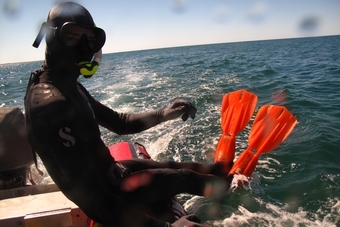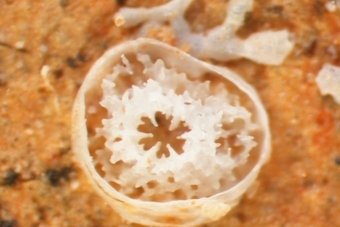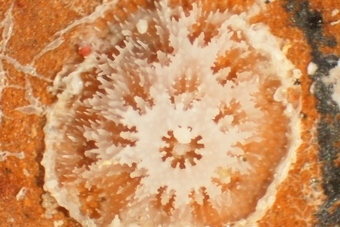Publications:
Turner et al. 2018
There is currently very limited information around the spatial patterns of coral recruitment at mesophotic depths globally. This study investigated depth-related differences in coral recruitment patterns from shallow (~ 3 m) to mesophotic depths (~ 40 m) in the Indian Ocean. A new method is described for assessing coral recruitment, which allows for the improved study of recruitment patterns on deep reefs globally, as the method does not require SCUBA diving. This method allows for comparisons with other studies as there appears to be no influence on the density, composition, or settlement orientation of recruits relative to the most commonly used methods. Using this method, we investigated coral recruitment at Ningaloo Reef, Western Australia, finding the abundance of coral recruits varied significantly with depth and was highest at 25 m. The size of coral recruits changed significantly with depth, with larger recruits observed in shallower areas (3 and 8 m) than in deep areas. Distinct changes in settlement densities on tile surfaces occurred with increasing depth, with a shift to upper tile surfaces between 8 and 25 m, where the proportion of recruits increased from 10.72 to 87.69%, respectively. Overall counts of recruits were low, with minimal recruitment at the deepest sites and moderate but significant correlations between recruit numbers and hard coral cover were observed. This suggests that variations in larval supply, potentially coupled with larval behaviour and local-scale influences, limit exchange of larvae between depths and locations. This is consistent with genetic studies that show limited exchange between shallow and mesophotic reefs and points to a limited potential for mesophotic reefs to act as a source of larvae for impacted shallow reefs.
3- 40 m
Mesophotic “mentions”
16 x (total of 5250 words)
Classification
* Presents original data
* Focused on 'mesophotic' depth range
* Focused on 'mesophotic coral ecosystem'
Fields
Connectivity
Reproduction
Focusgroups
Scleractinia (Hard Corals)
Locations
Australia - Western Australia
Platforms
Autonomous Underwater Vehicle (AUV)
Snorkeling
Surface-deployed sensors and samplers
SCUBA (open-circuit or unspecified)




